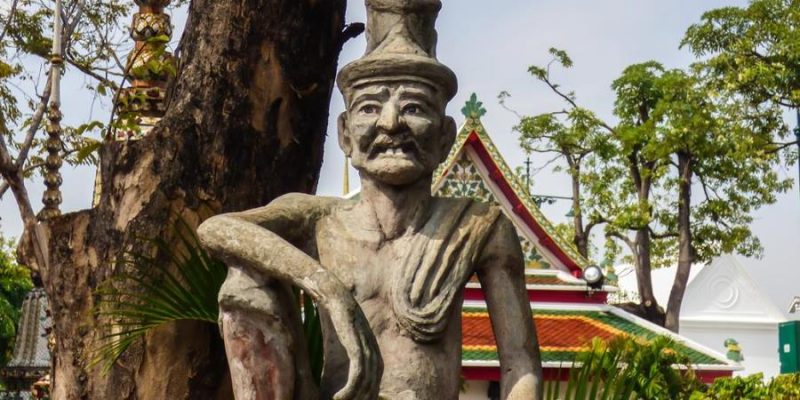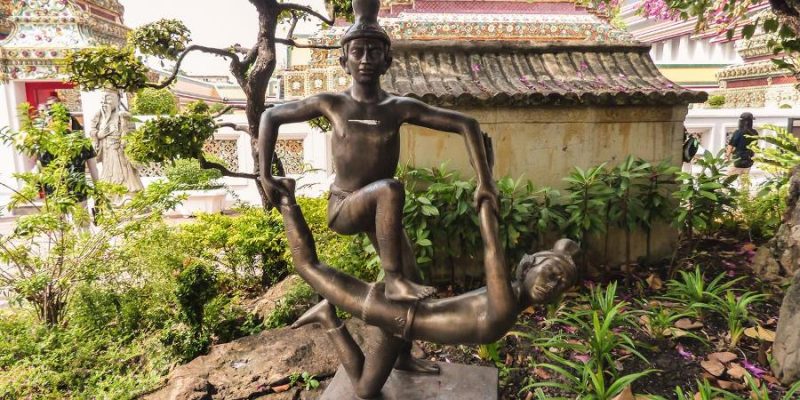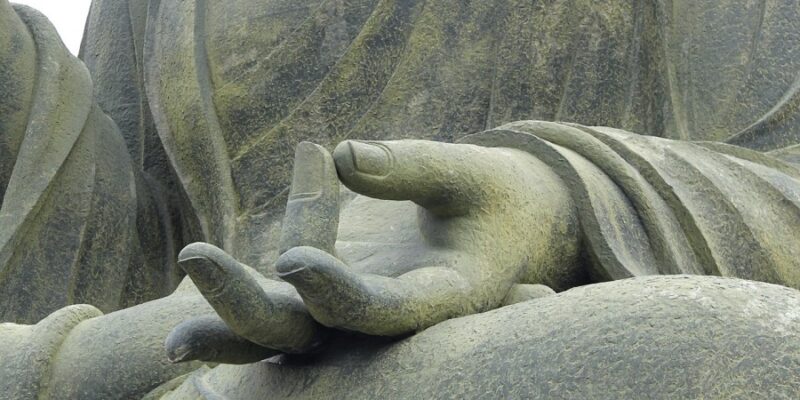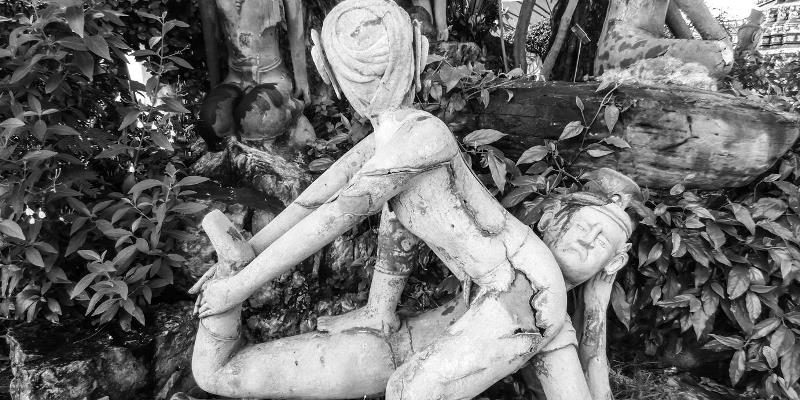
Looking more closely at the tradition of Thai Massage in Thailand, we notice that giving treatments was never seen as “just a job.” Massage was always considered a spiritual healing practice closely connected with the teachings of the Buddha, but also, perhaps somewhat paradoxically, mixed with animistic religious features of local beliefs. We see proof of the latter still rather clearly in the way some of the Northern Lanna Folk Healing Arts are practiced.
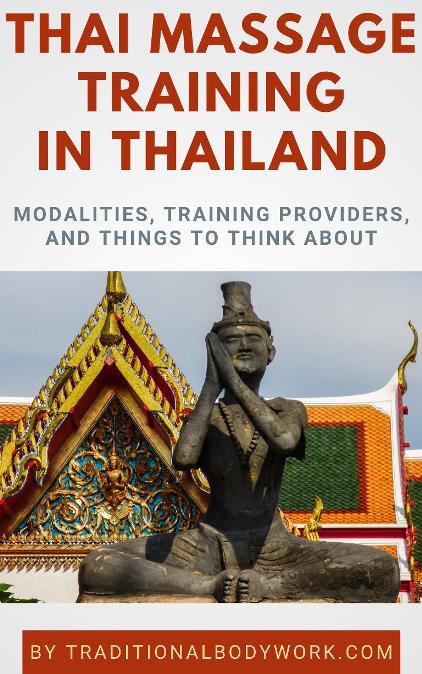
In the recent past, about up to the 1950s, the Thai Healing Arts were only taught and practiced in the Wat (the Thai temple), by local healers, and at home. Even today, one of the most important massage schools in Thailand, the Watpo Medical Massage School, is still closely connected to the famous Wat Pho temple in Bangkok. The establishment of legitimate, secular, and commercial massage facilities and training centers outside of temples, homes, and local healing practices is quite a recent development.
In Thailand, historically, giving Thai Massage was understood to be a physical application of Metta, the Pali (and Thai) word used in Theravada Buddhism to denote loving kindness, and devoted masseurs, healers and therapists in Thailand still work in such a spirit today, carrying out a session with full awareness, mindfulness and concentration.
Another evidence of the spiritual background of Thai Massage and Traditional Thai Healing is the convention to give a moment of silence, thanks and prayer just before a massage session, the so-called Wai Khru. It’s a solemn testimony of respect to Dr. Jivaka Komarabhacca, the Buddhist “Father of Thai Traditional Medicine.”
Of Jivaka Komarabhacca it’s said that he was the personal physician and friend of the Buddha, and the Wai Khru is a meditative contemplation, which in English means “Pray to the Lord.” It’s a traditional prayer to both Dr. Jivaka and the Buddha, to ancestors, and all teachers, to thank them for the knowledge they shared and ask them strength, wisdom and courage, but also protection during the treatment session.

It is important to keep this ideal in mind and to learn Thai Massage in that spirit. Today, still, at many Thai Massage schools in Thailand, the spiritual tradition is honored. There is a world of a difference between a massage performed in a meditative, concentrated and compassionate mood and a massage done just as “a job,” and serious, experienced Thai Massage teachers and healers know this as no other.
Yet unfortunately, in past decades, the explosive growth of tourism in Thailand has also brought a whole other kind of Thai Massage surfacing — one that, in terms of treatment offerings, clearly outnumbers the traditional style of doing Thai Massage. This new, touristified style of Thai Massage is rather aimed at relaxation, unbridled indulgence, pampering, and exoticism, and usually highly commercialized, being increasingly remote from what the traditional Thai Healing Arts stood for.
Mind that a therapist or masseur working in a meditative state of mind will develop an intuition for the energy flow in the body, for the Prana Channels aka Sen Energy Lines, and for the physical, emotional, and spiritual needs of the receiver. Subsequently, such a healer will be better able to treat different people successfully according to their wants. Without such higher consciousness and awareness, Thai Massage becomes mechanical, overly commercial, finally losing much of its healing power.








